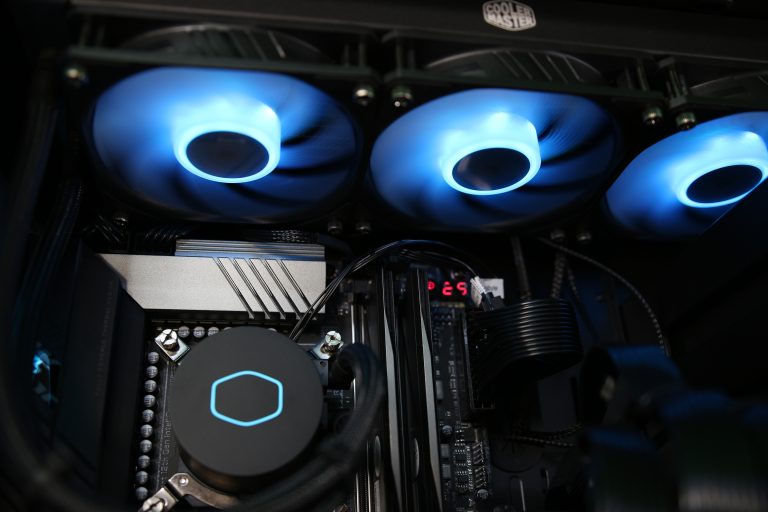Computer Cooling Tips and Tricks
कंप्यूटर को ठंडा रखने के लिए कुछ उपयोगी टिप्स और ट्रिक्स हैं:
धूल को नियमित रूप से साफ करें:
- फैन, हीट सिंक्स, और अन्य कंपोनेंट्स पर जमा धूल को नियमित रूप से हटाएं।
उचित वेंटिलेशन सुनिश्चित करें:
- कंप्यूटर के केस में ठंडा बनाए रखने के लिए उचित वेंटिलेशन का समर्थन करें।
सही स्थान पर कंप्यूटर रखें:
- कंप्यूटर को सही स्थान पर रखें, जिसमें वेंटिलेशन हो और कंप्यूटर के आसपास पर्याप्त जगह हो।
उचित थर्मल पेस्ट का उपयोग करें:
- सीपीयू और जीपीयू के हीटसिंक्स को सही ढंग से स्थापित करें और उचित थर्मल पेस्ट का उपयोग करें।
उचित कूलिंग कंपोनेंट्स का चयन करें:
- अच्छे कूलिंग कंपोनेंट्स का उपयोग करें, जैसे कि फैन और हीट सिंक्स।
केबल प्रबंधन को संयंत्रित करें:
- केबल प्रबंधन को संयंत्रित करें ताकि केबल फैन के पास न आएं और ठंडाई के लिए रास्ता हो।
फैन की गति को बढ़ाएं:
- कुछ मादरबोर्ड या सॉफ़्टवेयर द्वारा फैन की गति को बढ़ाया जा सकता है।
ग्राफिक्स कार्ड के लिए थर्मल पैड का उपयोग करें:
- कुछ ग्राफिक्स कार्ड को थर्मल पैड का उपयोग करके ठंडा रखा जा सकता है।
ऑवरक्लॉकिंग से बचें:
- ओवरक्लॉकिंग करने से पहले ध्यान दें कि कंप्यूटर का सही तरह से ठंडा है।
Maintaining proper cooling for your computer is crucial to ensure optimal performance and longevity of your hardware components. Here are some tips and tricks for computer cooling:
Clean Dust Regularly:
- Dust can accumulate on fans, heat sinks, and other components, reducing their efficiency. Clean your computer regularly using compressed air to remove dust.
Ensure Proper Ventilation:
- Make sure your computer has adequate ventilation. Ensure that intake and exhaust vents are not obstructed. Proper airflow is essential for cooling.
Position Your Computer Correctly:
- Place your computer in a well-ventilated area with enough space around it. Avoid placing it in closed cabinets or against walls that may impede airflow.
Use Quality Thermal Paste:
- When installing or reseating a CPU or GPU heatsink, use high-quality thermal paste. Proper application of thermal paste ensures efficient heat transfer between the chip and the heatsink.
Invest in Quality Cooling Components:
- Consider upgrading your cooling components, such as fans and heatsinks, for better performance. Aftermarket cooling solutions can sometimes be more efficient than stock ones.
Optimize Cable Management:
- Proper cable management allows for better airflow inside the case. Organize cables to avoid blocking airflow to crucial components.
Monitor Temperatures:
- Use temperature monitoring software to keep track of your CPU and GPU temperatures. If temperatures consistently run high, it may indicate an issue with your cooling setup.
Undervolt Your CPU/GPU:
- Undervolt reduces the voltage supplied to your CPU or GPU, decreasing heat output without sacrificing performance. This can be done through BIOS/UEFI settings or specific software.
Adjust Fan Speeds:
- Some motherboards or third-party software allow you to adjust fan speeds. Increasing fan speeds can enhance cooling, but be mindful of noise levels.
Consider Liquid Cooling:
- Liquid cooling systems can offer efficient cooling for high-performance systems. They circulate liquid through a closed loop to dissipate heat. However, installation can be more complex than air cooling.
Install Case Fans:
- Ensure your computer case has an adequate number of fans for intake and exhaust. Additional case fans can improve overall airflow and cooling.
Use Thermal Pads for GPUs:
- Some graphics cards benefit from additional cooling using thermal pads. Ensure they are correctly applied to enhance heat dissipation.
Avoid Overclocking Without Proper Cooling:
- Overclocking increases the heat output of components. If you overclock, ensure you have adequate cooling to handle the additional thermal load.
Remember to tailor your cooling solutions to the specific needs of your computer and components. Each system may require a different approach based on its configuration and usage patterns.



0 Comments